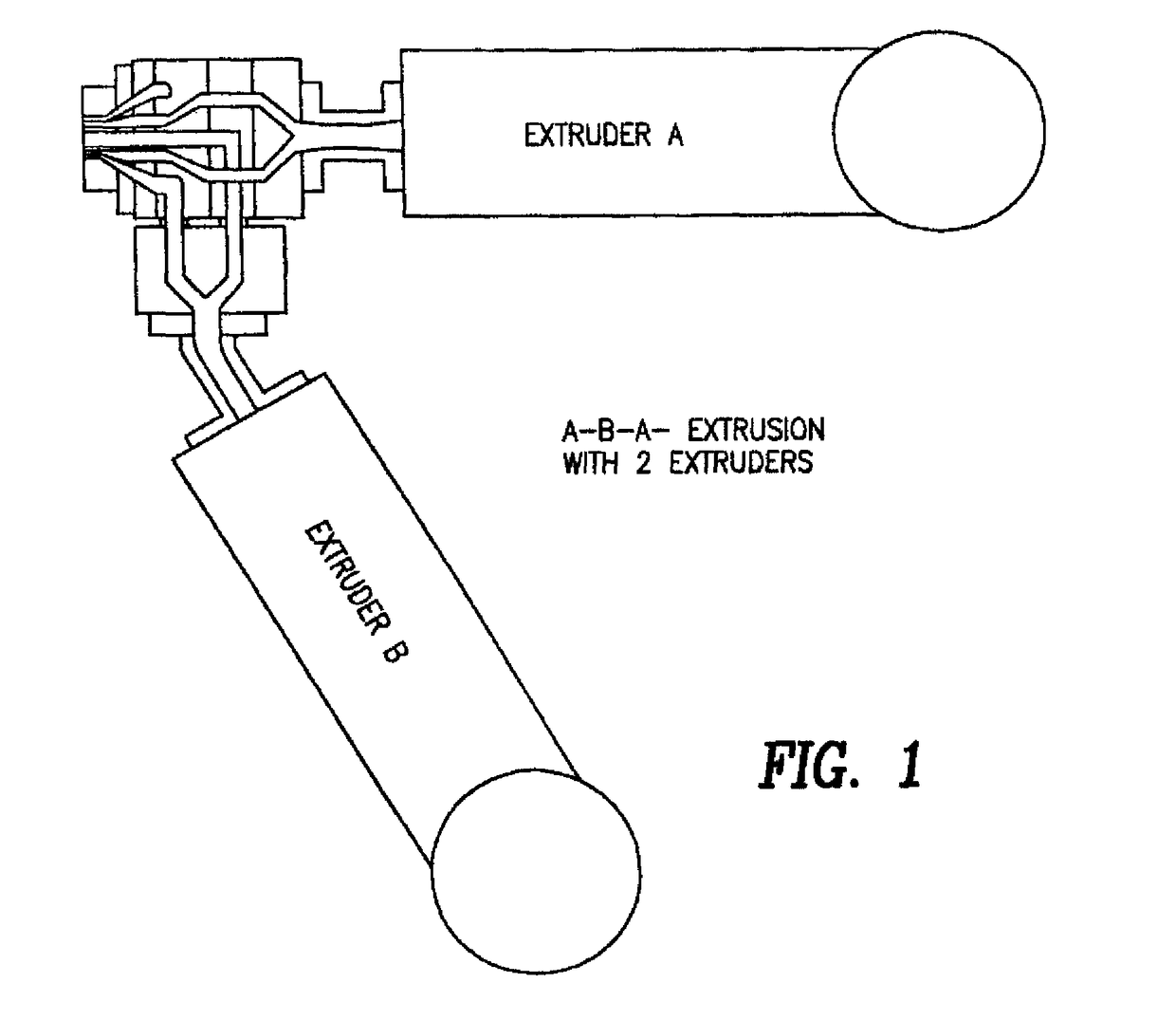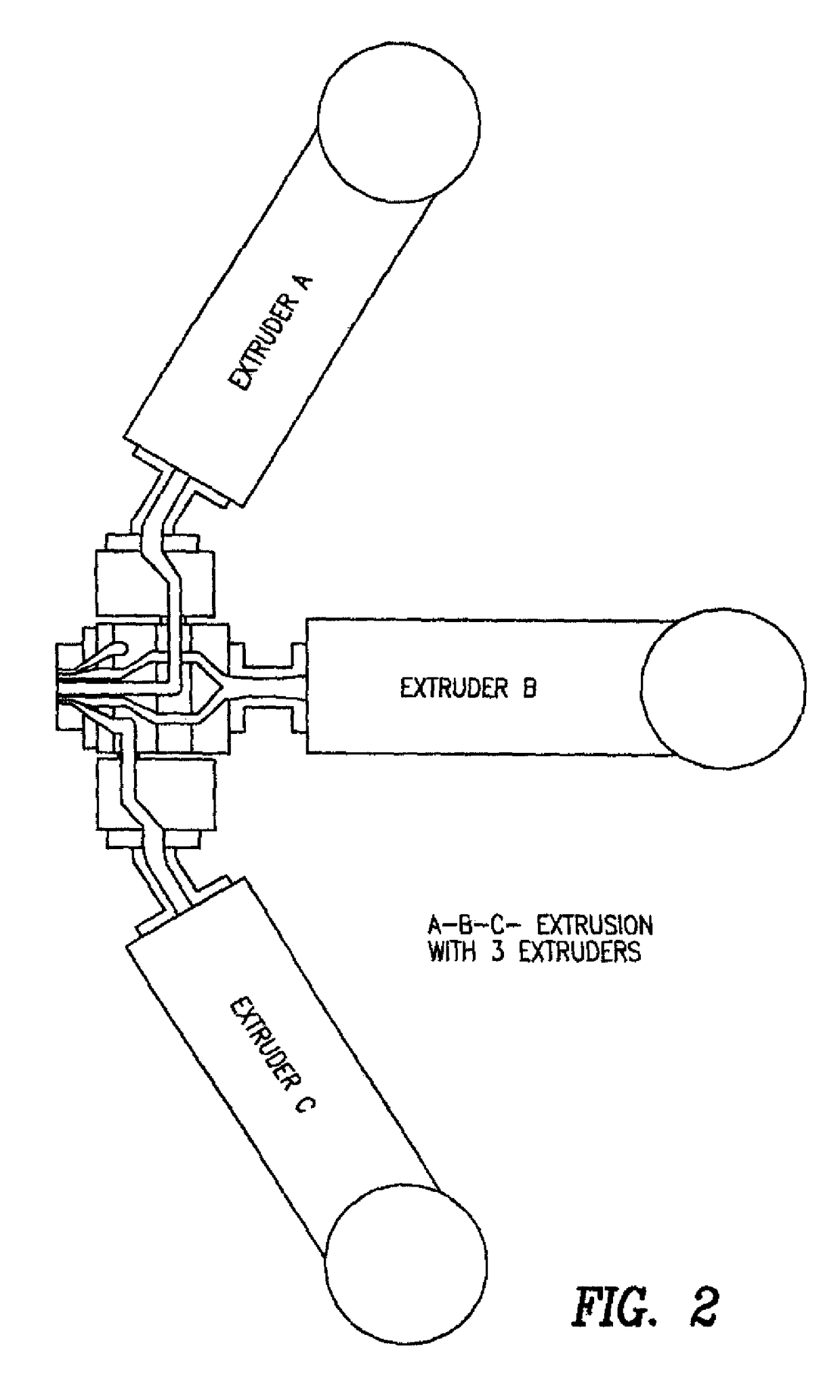Elastomeric composition having high impact strength
a technology of elastomeric composition and impact strength, which is applied in the field of polymer composition, can solve the problems reducing the cost of color concentrate, so as to reduce the cost of color concentrate and reduce the cost. the effect of reducing the cost of performance related thermoplastics/thermosets without reducing performan
- Summary
- Abstract
- Description
- Claims
- Application Information
AI Technical Summary
Benefits of technology
Problems solved by technology
Method used
Image
Examples
examples 1-5
[0057]In this experiment a series of polymeric formulations were prepared in accordance with this invention and tested to determine physical properties. In the procedure used the ingredients delineated in Table 1 were dried and mixed in a twin screw extruder to attain homogeneous polymeric blends. The polymeric formulations were then processed into dog-bones for determination of physical properties. The properties of the polymeric formulations made are also shown in Table 1.
[0058]
TABLE 1Example12345CompositionMicronized rubber powder75%75%71.4%71.4%71.4%(40 mesh)Engage ® A110325%—23.8%—11.9%ethylene-octene elastomerVistamaxx ™ 6102 —25%—23.8%11.9%ethylene-octene elastomerEpolene ® C-26 maleic —— 4.8% 4.8% 4.8%anhydride grafted polyethylenePhysical PropertiesTensile Strength @ break (psi)221222556607550Tensile Elongation @ break (%)138203251218232Flexural Modulus (psi)4284129713887946Flexural Strength @ 5% (psi)19.018.543.714541.7
[0059]As can be seen from Table 1, the presence of the...
example 6
[0060]One embodiment of this invention includes a mix of micronized rubber from Lehigh Technologies, LLC of 120 Royal Woods Court SW, Tucker, Ga. 30084, and Vistamaxx™ propylene based elastomers from Exxon Mobil Chemical Company, of 13501 Katy Freeway, Houston, Tex. 77079-1398. The invention may also include a combination of color concentrate and compatibilizer from Struktol Corporation, of 201 E. Steels Corners Road, P.O. Box 1649, Stow, Ohio 44224-0649 and a powder form of linear low density polyethylene (“LLDPE”). There are varying degrees of performance and cost targets which may be met adding and subtracting portions of the ingredients of the mix.
[0061]The addition of a cap coat with a Vistamaxx 3020™ or equivalent molecular blend / loading allows for adhesion of the two layers in the multi-layer extrusion process and also allows both layers to exhibit like performance of elasticity upon impact. The high density polyethylene (“HDPE”) provides a stiffening property to the matrix a...
PUM
| Property | Measurement | Unit |
|---|---|---|
| weight percent | aaaaa | aaaaa |
| weight percent | aaaaa | aaaaa |
| weight percent | aaaaa | aaaaa |
Abstract
Description
Claims
Application Information
 Login to View More
Login to View More - R&D
- Intellectual Property
- Life Sciences
- Materials
- Tech Scout
- Unparalleled Data Quality
- Higher Quality Content
- 60% Fewer Hallucinations
Browse by: Latest US Patents, China's latest patents, Technical Efficacy Thesaurus, Application Domain, Technology Topic, Popular Technical Reports.
© 2025 PatSnap. All rights reserved.Legal|Privacy policy|Modern Slavery Act Transparency Statement|Sitemap|About US| Contact US: help@patsnap.com


